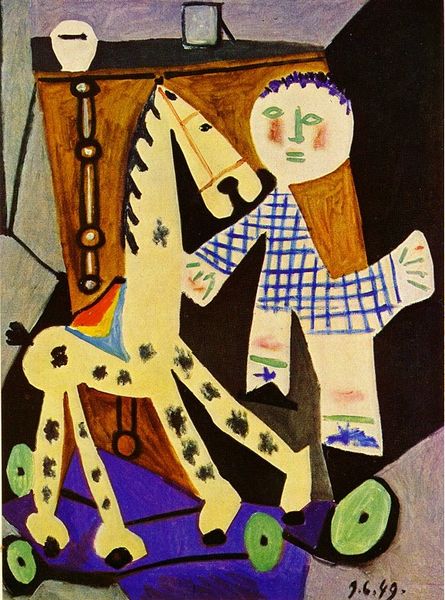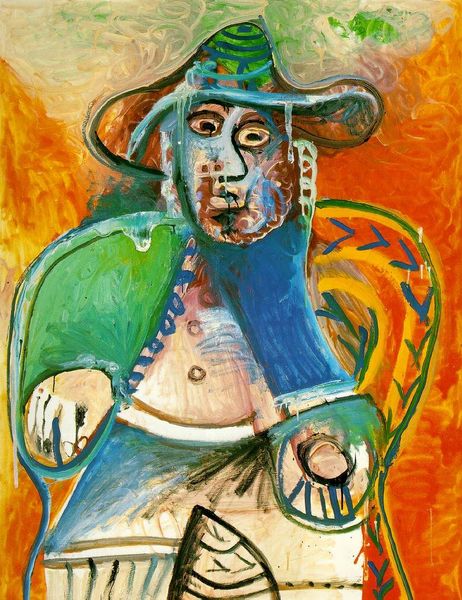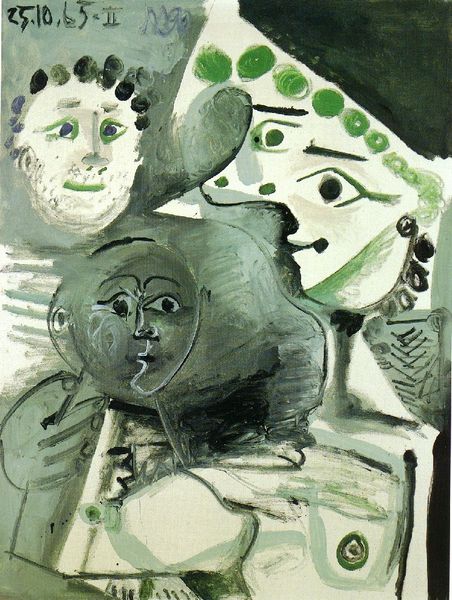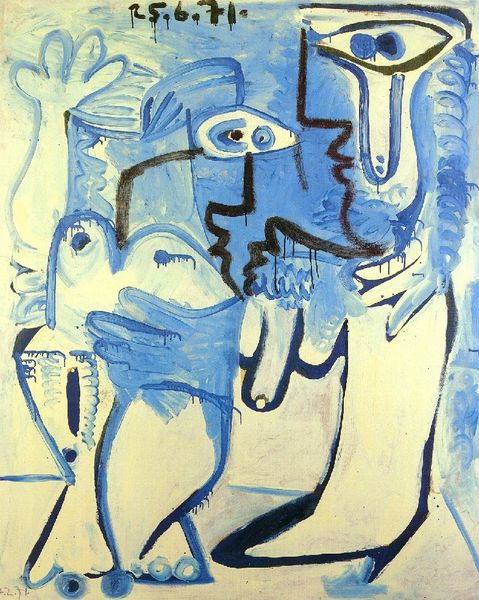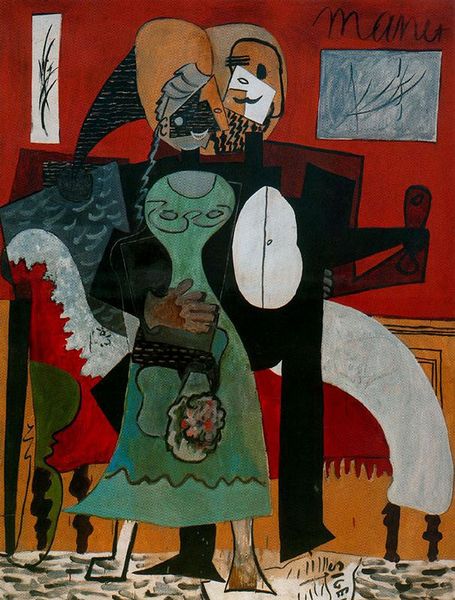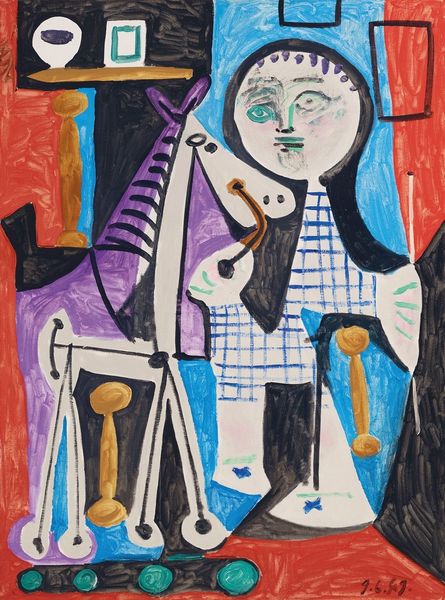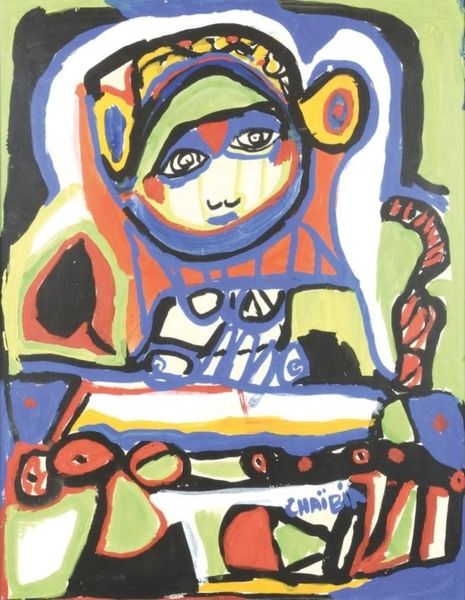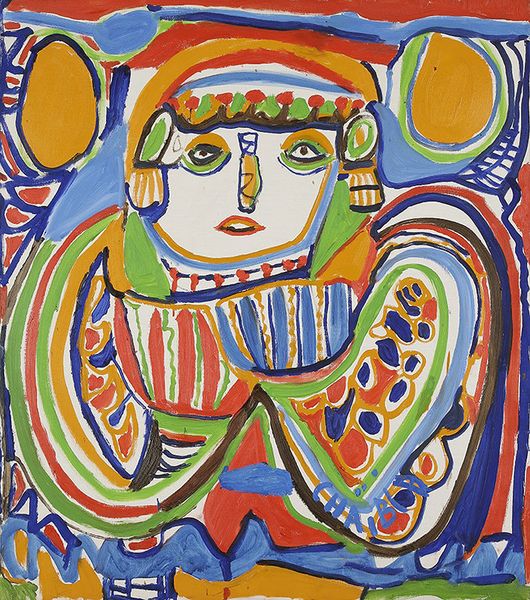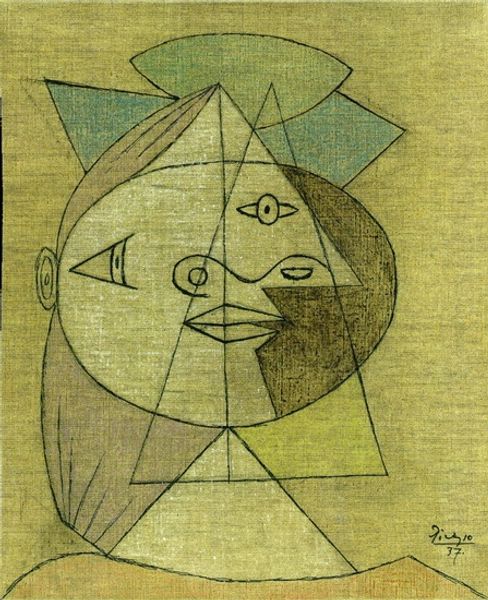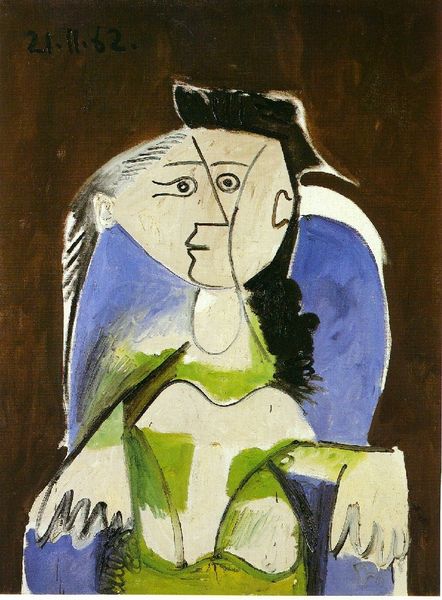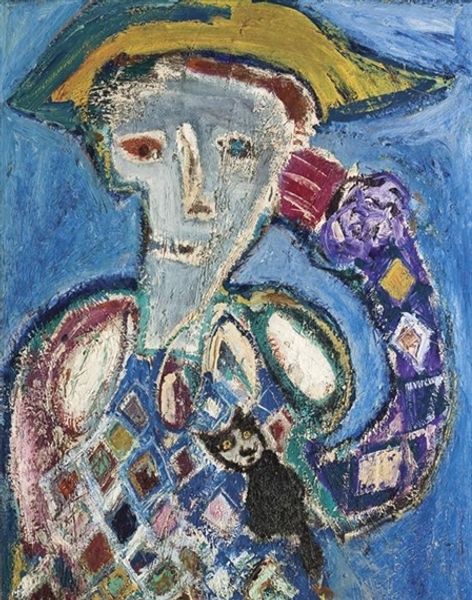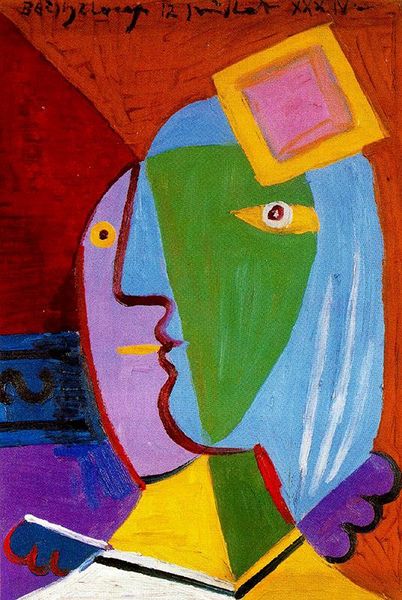
painting, acrylic-paint
#
portrait
#
cubism
#
self-portrait
#
painting
#
acrylic-paint
#
figuration
#
child
#
male-portraits
#
geometric
#
modernism
Dimensions: 100 x 81 cm
Copyright: Pablo Picasso,Fair Use
Curator: So, we’re standing in front of Picasso’s "Claude with a ball," a striking painting from 1948 rendered in acrylic paint. What jumps out at you? Editor: It’s definitely…blue. A little melancholy, maybe? Like a child encased in geometric forms, holding a rather anxious-looking sun in their hand. Does that sound strange? Curator: Not at all. Blue is often linked to the melancholic, or even the spiritual, particularly in portraiture. Here, the geometric forms echo Picasso’s cubist tendencies. You see how the planes of the face are slightly disjointed? And it is striking against that violet background. The ball he holds does have a radiant, sun-like quality. Editor: Anxious suns probably betray my mood more than Picasso’s intentions! Still, I'm struck by the kind of…unreality of it all. Children are often vessels for hope, untainted by life, right? But here that clean slate seems shattered. Curator: Precisely! Cubism fragments the subject, revealing multiple viewpoints simultaneously. Consider also the socio-political context: 1948 was just after World War II. Picasso witnessed firsthand the fragmentation of society, and maybe that reflects in how he pictures his child here, though he actually looks like one of Picasso's many self-portraits, some see it like that at least. Notice too how this image recalls folk-art traditions of depicting childhood and innocence with heavy use of geometric design. Editor: That gives the fracturing an interesting twist! Perhaps less about broken innocence, more about innocence looked at from all angles at once, viewed under the pressure of an epoch of upheaval. It feels like memory itself, all the contradictions smoothed and fit in. The "primitive" visual vocabulary is very striking as well. Curator: Precisely. Folk art often presents idealised versions of everyday life, reflecting collective aspirations and communal identity. The boy's clothing evokes tradition through stylized representation, which carries symbolic cultural meanings. Editor: Well, I definitely have a sunnier outlook on our geometric friend here! That bit of contextual understanding transforms that sun from worried to wonderfully complex! It adds layers, showing Picasso's brilliance at refracting familiar things in startling, refreshing ways. Curator: Yes, now when I look at it, it really shows more of those prismatic refractions and the complex ways in which symbols communicate cultural identity, especially amidst societal shifts. Thanks for untangling that.
Comments
No comments
Be the first to comment and join the conversation on the ultimate creative platform.
